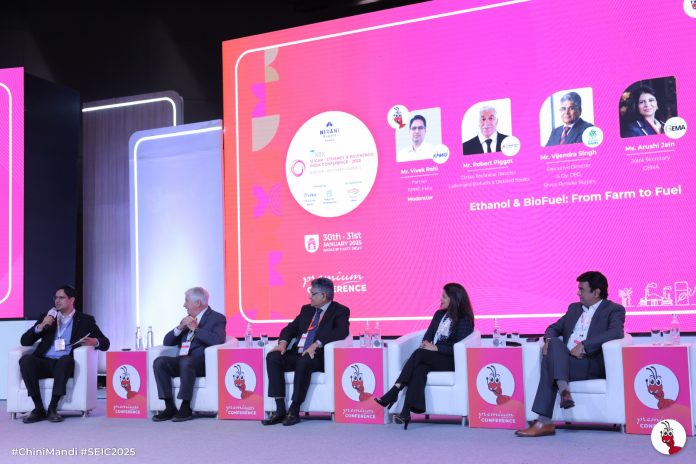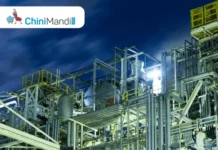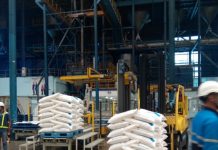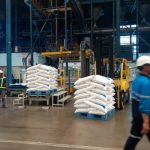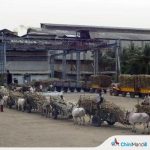Sugar – Ethanol & Bioenergy India Conference (SEIC) 2025, held from January 30 to 31, 2025, brought together industry stakeholders on one platform. The 4th edition of the conference kickstarted in New Delhi with a resounding inaugural session. The Union Minister of Road Transport and Highways Nitin Gadkari spoke about the bright future of the sugar industry, and the potential it has to contribute to 3% of the country’s GDP.
The 3rd session of the Conference was titled ‘Ethanol & BioFuel: From Farm to Fuel.’
Moderator: Vivek Rahi, Partner at KPMG India
Panellists
Robert Piggot, Global Technical Director, Lallemand Biofuels & Distilled Spirits
Vijendra Singh, Shree Renuka Sugars Limited
Arushi Jain, Joint Secretary, Grain Ethanol Manufacturers Association
Atul Mulay, President, Bioenergy, Praj Industries
The Moderator asked about technology advancement in this space and improving the efficiency of our existing technology.
Robert Piggot said, “Ethanol alone isn’t profitable. Revenue comes from multiple streams like DDGS and extracted oil. Diversifying income helps stabilize ethanol prices. Technology enhances efficiency, and Brazil is now investing in corn-based ethanol plants. Simplicity and efficiency are key—plants must be optimized and automated. Scalability is essential”.
The Moderator asked Vijendra Singh about the challenges that ethanol producers face today.
He said that, “In India, the ethanol market is tightly regulated, with fixed pricing and controlled sugar exports and imports. Unlike Brazil, where both sugar and ethanol markets are open, India’s ethanol is sold only to oil companies through tenders at the start of the year. Logistics remain a challenge as blending increases, creating inefficiencies in transportation.
The existing oil and gas infrastructure was designed for crude imports and refining, not for ethanol integration. Policy gaps, such as mismatched raw material and ethanol prices, hinder expansion. A better pricing mechanism and long-term policy stability are needed to ensure industry confidence and growth, benefiting farmers and the economy”.
Arushi Jain said that, “The ethanol industry is pushing for better pricing, but current rates don’t align with feedstock costs, which make up 85% of ethanol’s price. While sugarcane follows an FRP system, grain operates in a dynamic free market, making fixed yearly pricing challenging. However, the grain ethanol industry has seen massive growth, thanks to government initiatives and entrepreneurial efforts”.
Atul Mulay, “India is leading the Global Biofuel Alliance alongside major ethanol producers like Brazil and the U.S. As a key contributor, India, with companies like Praj, is advancing ethanol production from sugarcane, grain, and advanced biofuels. Beyond ethanol, the focus includes compressed biogas and second-generation biofuels. India’s role in the alliance is driven by technological advancements, positioning the country as a significant player in the global biofuel sector”.
It was concluded that the country’s ethanol market is regulated. The sugar industry is disappointed with the recent price hike of C Heavy molasses only, whereas the prices of B Heavy molasses and sugarcane to juice were kept unchanged. There are persisting logistics challenges. In addition, policy mismatches in raw material and ethanol prices further hinder growth, requiring better pricing mechanisms and long-term stability.

